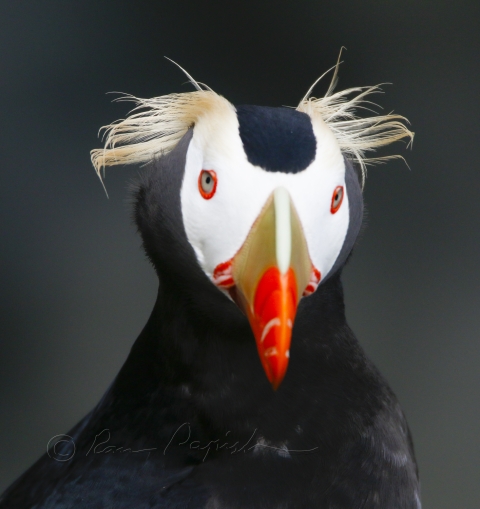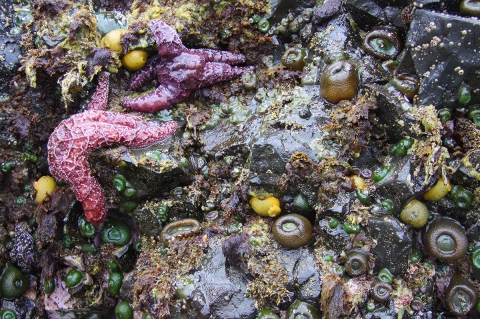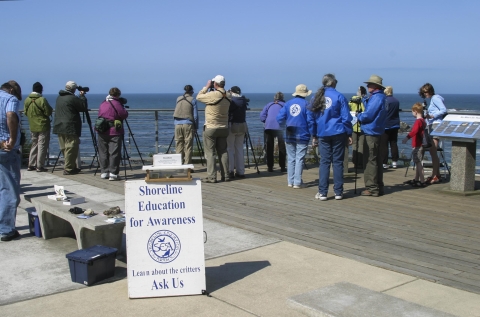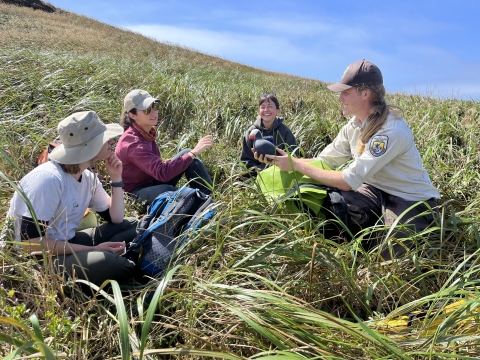Visit Us
National Wildlife Refuges offer us all a chance to unplug from the stresses of daily life and reconnect with our natural surroundings. At Oregon Islands National Wildlife Refuge, sea lions roar and seabirds call from islands surrounded by the roiling Pacific Ocean, set against the evergreen forests and dynamic shoreline of the Oregon coast. The forbidding rocks and reefs of this Refuge serve as crucial habitat for a stunning variety of wildlife.
Location and Contact Information
- Refuge HeadquartersView DetailsOregon Coast National Wildlife Refuge Complex 2127 SE Marine Science Drive Newport, OR 97365-5258
- South Coast Headquarters (Bandon Marsh National Wildlife Refuge)View DetailsBandon Marsh National Wildlife Refuge 83673 N Bank Ln Bandon, OR 97411
About Us
Spanning the Oregon coast, the wilderness islands and windswept headlands of Oregon Islands National Wildlife Refuge are celebrated for their abundant wildlife and rugged grandeur. Rocky islands and sheer cliffs provide isolated breeding and resting habitat for diverse communities of birds, marine mammals, and plants along the wave-battered coastline. Established on May 6, 1935, as a refuge and breeding ground for seabirds and marine mammals, the scenic and rugged Oregon Islands Refuge includes 1,853 rocks, reefs, and islands and stretches from Tillamook Head near Seaside south to the California border. All of the rocks and islands of the refuge are designated National Wilderness Areas, with the exception of 1-acre Tillamook Rock. Most of Oregon’s estimated 1.2 million nesting seabirds use Oregon Islands Refuge as a place to raise their young, and Oregon’s seals and sea lions use the islands as a place to haul out and rest or to give birth to their pups.
What We Do
The U.S. Fish and Wildlife Service conserves and monitors plants and wildlife, manages and restores habitat, and provides outdoor recreation for the public at the nation’s more than 550 National Wildlife Refuges. Learn more about the Refuge’s current projects and research.
Our Organization
Our Species
No matter what time of year one visits the Oregon coast, wildlife are plentiful and often easy to see. Because the majority of Oregon Islands NWR lies offshore, visitors should plan on taking the long view: binoculars or spotting scopes are highly recommended. As always, don't forget the camera!
Get Involved
From its start in 1903, the National Wildlife Refuge System has owed its very existence to concerned citizens eager to protect America's natural resources. Click here to find out more about volunteer opportunities and how to get involved at Oregon Islands National Wildlife Refuge.
Projects and Research
To help plants and wildlife, Oregon Coastal Refuge Complex staff uses a variety of habitat management techniques to maintain, recover or enhance plant and wildlife values. Refuge staff carefully considers all management techniques, employing those best-fit to the situation at hand. The varied approaches Refuge staff take to benefit wildlife is commensurate with the array of species and habitats they're charged with protecting.


























